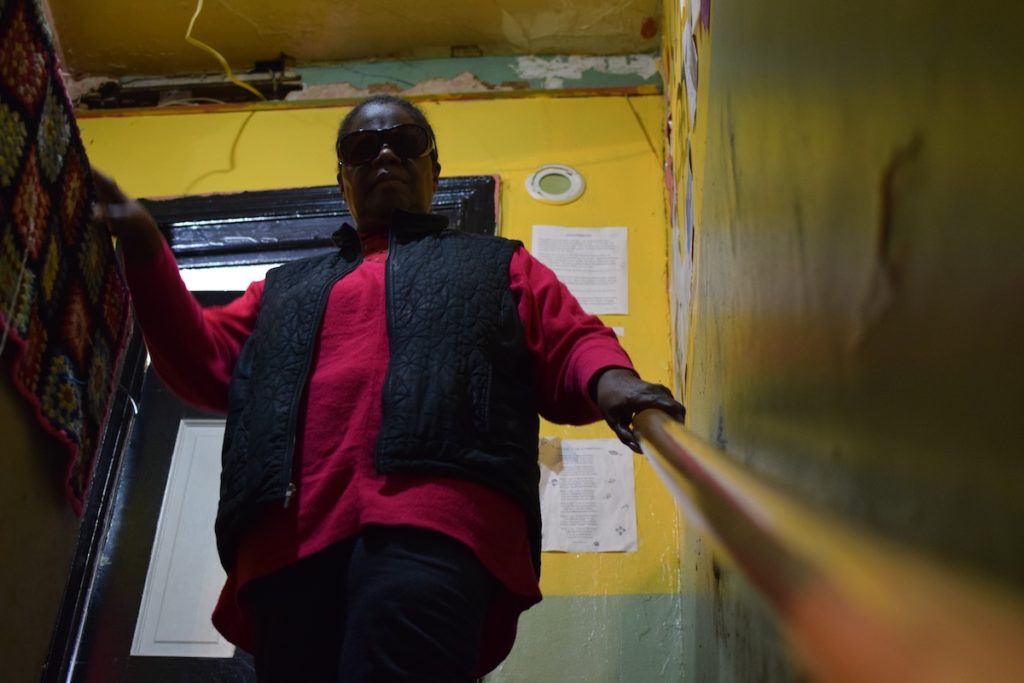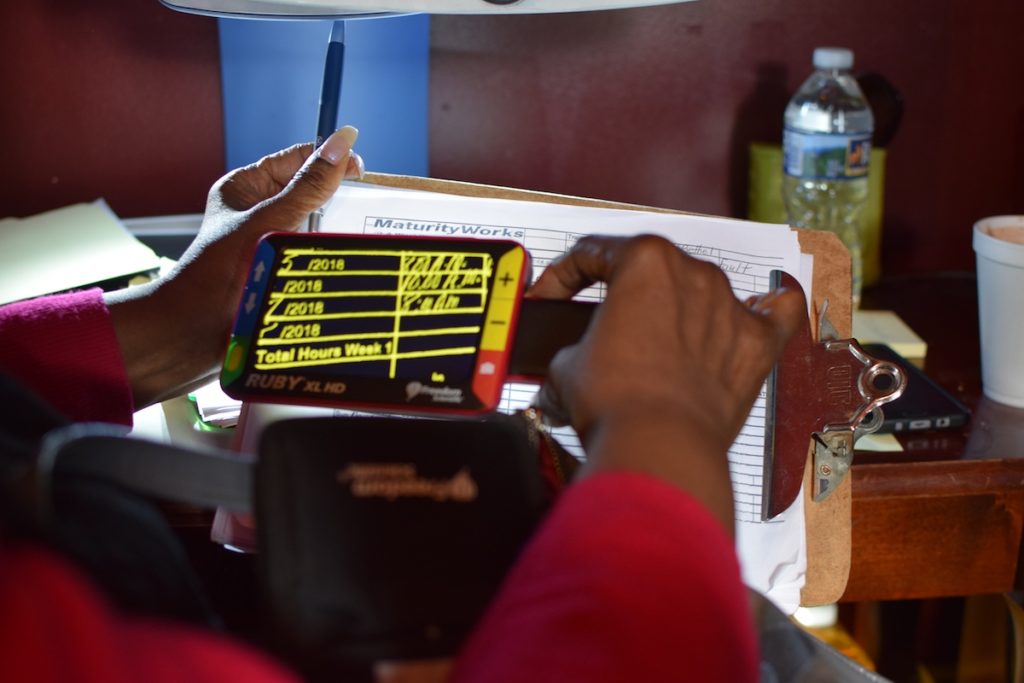For Philadelphians with disabilities, independence through technology is key
 April 11, 2018
Category: Feature, Featured, Long, Method
April 11, 2018
Category: Feature, Featured, Long, Method
Disclosures
Correction: One of Amy Goldman's quotes in a previous version of this story was incorrect due to a transcription error. It has been updated. (4/13, 2:20 p.m.)When Yvonne Hughes attended an independent living program for people who are visually impaired in Baltimore, she only spent six weeks of the scheduled eight months learning with her peers. After mastering navigating the city with a cane, Hughes led her own sessions on life skills, like cooking and cleaning, before traveling back to Philadelphia completely alone.
Hughes, 63, was diagnosed with retinitis pigmentosa, which is a hereditary, progressive eye disease that causes visual impairment and light sensitivity, at 26 years old. The diagnosis changed her life, she said, but never hindered her abilities.
“I was an independent person but … I didn’t stop,” said Hughes, a West Philadelphia resident. “I just learned how to adjust.”
Pennsylvania’s Initiative on Assistive Technology (PIAT) is one of the resources Hughes uses to remain independent.
PIAT, which is housed in Temple University’s Institute on Disabilities, helps increase people with disabilities’ access to assistive devices and services through programs such as device demonstrations, a lending library and grants.
The Institute on Disabilities has about 40 ongoing programs, which are separated into seven categories: advocacy, technology, education, employment, media arts and culture, policy and research, and evaluation.

Yvonne Hughes stands in the headquarters of It’s Not Your Fault, which is a nonprofit in North Philadelphia that runs several community outreach programs. (Photo by Grace Shallow)
PIAT Director Kim Singleton said the initiative is funded through the nationwide Assistive Technology Act, and it has nine regional centers across the state where people can pick up devices. Free lending-library-to-door delivery is also available.
According to its 2017 annual report, PIAT helped distribute about 5,730 devices that were worth more than $1,760,000 altogether.
Singleton became the director of PIAT last year after working as a speech language pathologist — a specialist who treats and assess people’s issues with speech, language and communication — for 35 years.
In her practice, she said, she saw an evolution of treatment and accessibility because of technology’s rapid development.
An iPad, for example, provides voice assistive technology and apps that were previously available only on $10,000-$15,000 computers, Singleton said. Take Ava, a free app for hearing-impaired people that transcribes conversations in real time and marks different speakers.
“We all basically have a wealth of things in a tablet that we can engage people around so it becomes the carrier activity for the work of teaching somebody how to communicate, and more things are possible,” Singleton said.
Amy Goldman, who was PIAT’s director for 24 years before retiring, said technology evolves so quickly it can become a challenge for PIAT to keep updated devices in stock — and for the public policy mandating national access to assistive technology to include the appropriate language.
While at PIAT, Goldman said she advocated for the Centers for Medicare and Medicaid Services to prevent proposed restrictions on funding technology “beyond any capacity of face-to-face communication.”
Not changing CMS’s coverage rules, which were amended in 2004 to expand the types of technology that are allowed to be funded, would have “retooled devices to 1985” and severely hindered people’s ability to communicate, she said.
“If you can’t communicate, you can’t be what we call self-determined,” Goldman said. “From little decisions from what you want to wear in the morning to big decisions like a living will, having a means of communications is key to that. It’s key to opportunities because if I can’t tell you what I know … you are going to underestimate me.”
While Goldman and Singleton agree assistive technology is integral to enhancing communication, PIAT has devices available for people with a wide range of disabilities, including those who have sensory, vision and mobility issues.
Hughes said she started working with PIAT 20 years ago and has accessed at least six devices — one being a CCTV, which is a magnifier that helps people who are visually impaired read and write.

Yvonne Hughes uses a portable CCTV, a magnifier for people who are visually impaired, to check timetables in her office at the nonprofit It’s Not Your Fault on April 10. Hughes is the nonprofit’s deputy administrator. (Photo by Grace Shallow)
Hughes has used assistive technology in her many roles: a mother to her 41-year-old twins who just celebrated their birthday last week, a teacher at multiple Catholic schools in the city and her current stint as the deputy administrator of the nonprofit It’s Not Your Fault, which leads several community programs in North Philadelphia, including food distribution, employment for seniors and life skills training.
In her office at the nonprofit’s headquarters on Cleveland Street near Susquehanna Avenue, Hughes uses a CCTV in her office to help with daily tasks like examining paperwork. She also keeps a portable CCTV in her bag, along with devices such as a Victor Reader Stream, a handheld media player for people who are visually impaired.
To help people with disabilities learn how to “navigate the system” and access resources, Hughes leads a workshop at It’s Not Your Fault and always mentions PIAT, she said.
Programs like PIAT can help fill gaps in accessibility especially when offices and agencies, like the state’s Bureau of Blindness and Visual Services, have long waiting periods, she added.
Hughes said she hopes to one day open a center to reach out to more people with disabilities and help them reach their goals.
“Those of us who are disabled are shortchanged,” Hughes said. “Most people think we just want to get up and cook a little bit. If that’s all we did, we’d be as big as two houses. … There are so many other things that we want to do.”

Yvonne Hughes starts an iPad she received through the help of Temple University’s Initiative on Assistive Technology, which helps people with disabilities gain access to assistive devices across the state. Hughes has voice assistive technology installed on the tablet that helps her with tasks like emailing. (Photo by Grace Shallow)
Trending News









